Tactile Experience Book: Calvin Can...
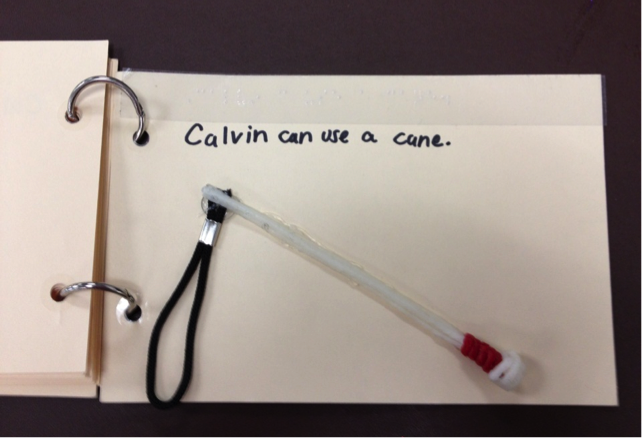
This tactile experience book was one of the first books that I created for Calvin, a kindergarten student. He was just beginning to learn to read braille and while he enjoyed listening to books, he had no braille books that he could read independently. He also had limited concepts and experiences.
The other students in Calvin’s class were already reading simple picture books and I wanted him to have a book of his own that he could read and also share with the class. Since Calvin looked much younger than his age, the other students tended to treat him like a younger child; I felt that it was important they learn that he was a peer who was capable of doing many of the same things they did in addition to learning special skills like braille, using a cane, etc. We created the book together, with Calvin telling me what he could do (with prompting). I then added the braille and tactile pictures to the book. Calvin was very excited about the book and I feel that it not only helped him learn to read braille, but it also helped boost his self-esteem once he realized that there were a lot of things that he could do.
To create the book, I used simple materials found in the classroom and at home. The book is composed of cut up braille paper and binder rings, so it can be expanded as needed. I tried to use actual objects (e.g., plastic spoon) or objects that felt like the actual object (e.g., for the headphones, I used the actual spongy material from an old set of headphones and for the swing, rubber and an actual chain). I also tried to incorporate concepts into the tactile pictures (e.g. slippery plastic material and a down arrow made from Wikki Stix to represent going down a slide).
When I first introduced the book to Calvin, I read it to him as he tried to follow along in braille. At that time, he was familiar with his name in braille and the contraction for “can”. Then I had him try to read it by himself, using the tactile pictures as clues to the text, just as a sighted child would use the pictures as clues to the words on the page.
At the end of the book I introduced some new contractions (“go”, “I”, “you”), using a repetitive style, e.g., “Calvin can go in a car, I can go in a car, you can go in a car.” After a lot of practice, Calvin read his book to the class and we added it to his “library”.
I also made Calvin a tactile alphabet book, using tactile pictures that represented each letter. He had input into which objects went into the book. I also tried to incorporate concepts into this book. For example, for the letter “e”, we glued on fragments of actual egg shells. Before this lesson, Calvin had only experienced scrambled eggs and had no idea what a whole egg was like. I boiled an egg and then had him hold it, trace it with Hi Mark paint, peel it, and glue actual shell pieces onto the “e” page of the book. Another tactile book that I made was in the shape of a pumpkin and included actual pumpkin seeds; I used a die cutting machine (Ellison Press) that I found in his school to cut braille paper into pumpkin shapes. This can be done with other shapes as well, e.g. apples, hearts, stars, etc. Using shapes makes the book more interesting tactually, as well as more fun for the child.
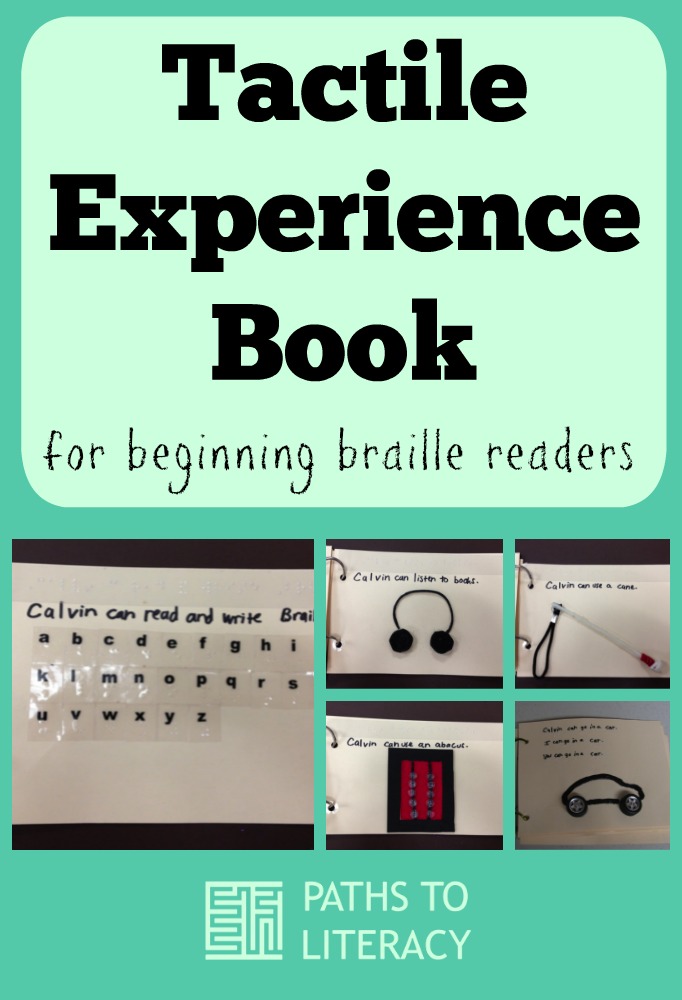

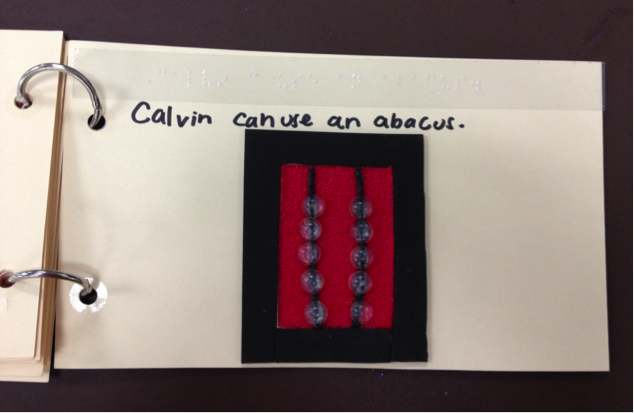
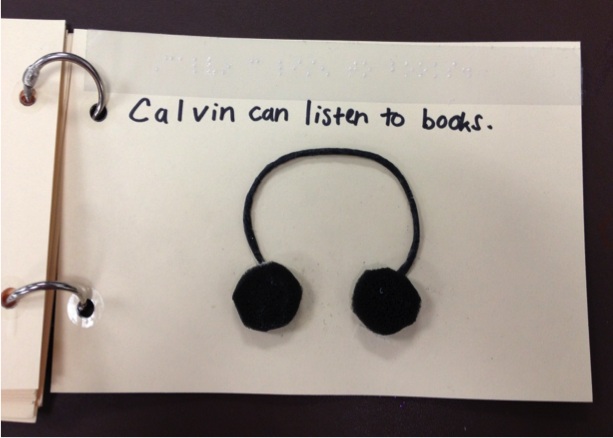
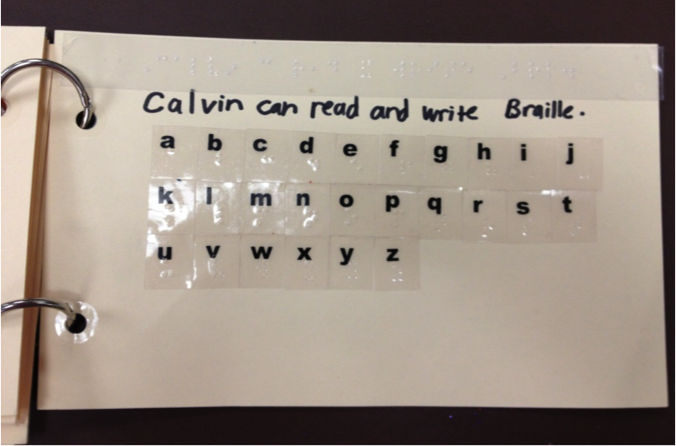
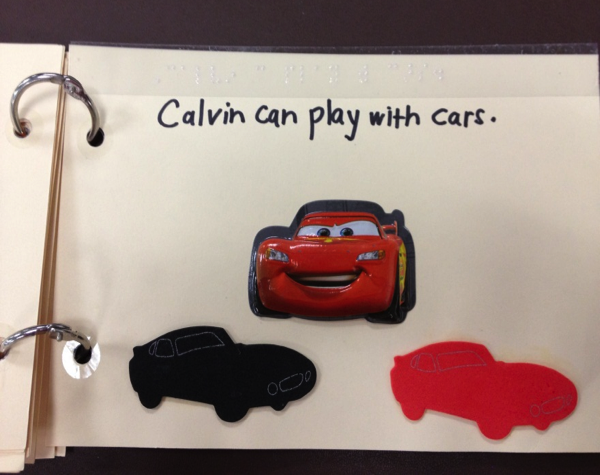
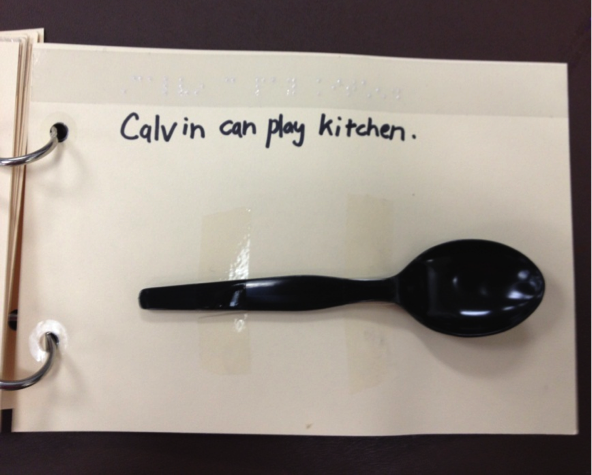

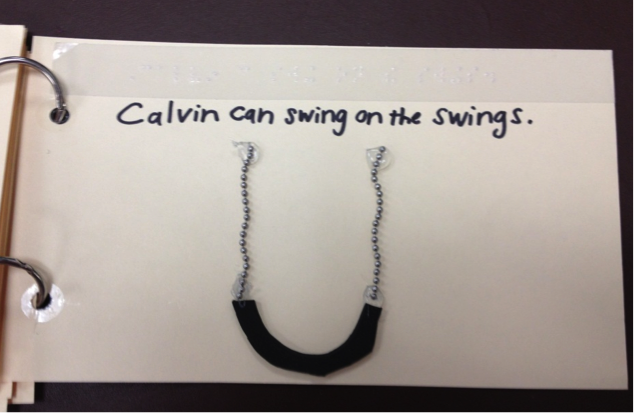


Comments
tactile experience picture books